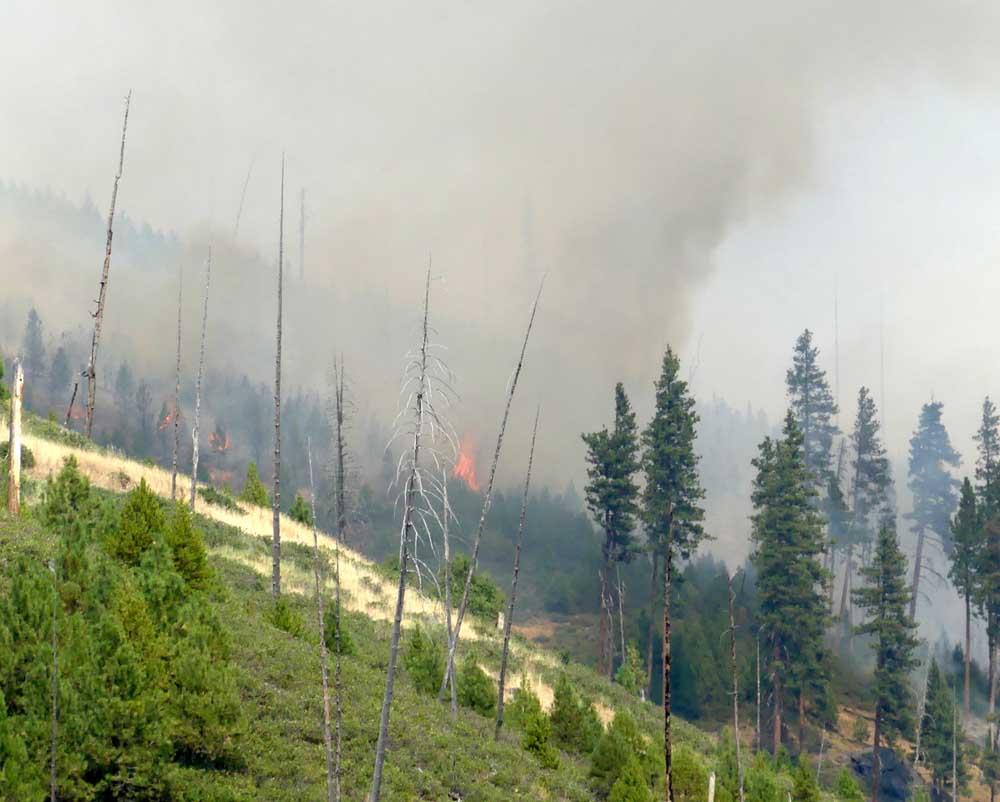$9.9 million grant to reduce wildfire risk in Grant County
Published 6:15 am Tuesday, March 28, 2023

- The Crockett Knob Fire burned more than 4,000 acres in Grant County in 2022.
JOHN DAY — The Grant County Soil and Water Conservation District has been awarded nearly $10 million by the U.S. Department of Agriculture to help lower wildfire risk in the region.
The $9.9 million USDA grant will support the Grant County Evacuation Corridor and Fuels Management Project, an effort to reduce fuel loads along 308 miles of roads in the county that serve as evacuation routes for residents in the event of a wildfire.
“Wildfire does not recognize boundaries, so it can burn from federal land onto private land or private to federal land,” said Irene Jerome, fire protection coordinator for Grant County and a local Firewise community educator. Jerome said she helped Sullivan with the grant proposal. “What this money does is it helps us prepare for that.”
The project also aims to treat 100,000 acres of grasses and other “fine fuels” with herbicides, officials said. The money will be used over a five-year period, said Kyle Sullivan, district manager of the Grant County Soil and Water Conservation District.
“A lot of our landscape has been rangeland, private land that has been taken over by annual invasive grasses,” Sullivan said. “And they tend to be fine fuel. They usually germinate in the winter, and come early spring they’ll start to grow and then die off and become fine fuel. We had a lot of precipitation this year, and they should be coming out of dormancy.”
Sullivan said he hopes the district will receive the funds this summer or fall.
“It would be nice to get this done this summer and, if not, for the next wildfire season,” Sullivan said.
In order to remove flammable brush from the roadsides, some of the money will go toward purchasing a new John Deere tractor with a 21-foot boom and a 50-inch flail at a cost of $179,000 for use by the Grant County Road Department.
“One thing that made this unique was the ability to purchase equipment with it, and that’s a rare thing with grants,” Sullivan said.
Alan Hickerson, Grant County’s roadmaster, said the new machine will complement another vehicle designed to move heavier trees and materials along the roadway, and the new tractor would be able to keep the road maintained throughout the year.
“With these two machines, we’d be looking at maintaining the county roads for at least 20 years,” Hickerson said. “Grant County has been devastated by fires, and with these machines, we can make some firebreaks on the roads and keep (potential) fire contained in certain areas.”
The funds will also help the district thin 2,000 acres of conifers on private lands, in addition to contracting a helicopter to spray herbicide over invasive grasses in the county. About $4.8 million from the grant will go toward the purchase of herbicide and $2 million will go toward forest thinning contracts.
Brett Morris, managing member of Morris Forestry, a logging and fuel reduction firm based in John Day, said the grants are exciting and he hopes his business will pick up some of the contract work if possible.
“These grants are great and almost necessary for a lot of the private land landowners here due to the low timber value in the area,” Morris said. “A lot of the private landowners have a hard time managing their timber, and so these grants are essential.”
The funds come after the USDA announced a $2 million investment to help the U.S. Forest Service and the Natural Resource Conservation Service mitigate wildfire risk in Grant County this year, as well as the recent awarding of a $681,041 Community Wildlife Defense Grant to the Oregon Department of Forestry from the federal Bipartisan Infrastructure Law.
The ODF grant will focus on 300 acres of fuel reduction treatments for Grant County landowners, the installation of Firewise Communities, and educational outreach in the “high-risk” communities of John Day, Mt. Vernon, Prairie City, Dayville, Granite Monument, Canyon City, Long Creek and Seneca.
“It’s not as big (of a grant), but it’s equally significant in that the work needs to happen but it’s unlikely to happen without that additional public funding, or state and federal funding,” said Mark Webb, executive director of Blue Mountain Forest Partners, a stakeholders group that includes loggers, environmentalists, ranchers, landowners, timber industry representatives, elected officials and federal land managers.
“The investment on these funds are investments in landscape health that will pay dividends down the road,” Webb said.




